Johannesburg has a record. It's a very green city, built in a forest beyond the town center, vast but concentrated, the districts stretch out in green and wide areas. It is not beautiful but it has a strange fascination due precisely to these green blotches that color a city with about 10 million inhabitants, of which, it is said, 4 million in the sole township of Soweto (which in turn is huge).
It does not have the benefit of the wonderful location of Cape Town. It is flat, far from the sea, is the economic center of South Africa and the whole of Africa, and in this city is concentrated 10% of the continental economy.
The city in which to gold mines alternate mountains of waste that are now the hills, which have, in turn, become green. Johannesburg has many names, Joburg or Jozi, it is also called eGoli, which, in Zulu language, means place of gold, because it happened here the famous gold rush that is still narrated today by the various visible mines.
It's a barricaded city, beautiful villas closed in boundary walls and electricity cables, where no one walks the streets, and apparently the "safe meeting points" seem to be the shopping centers but where urban creativity and the revaluation is transforming.
A city surprisingly colourful, mixed and lively. From luxurious residential neighbourhoods to the typical center of any great capital of Africa, to the huge township of Soweto, where Mandela lived, and where I believe is worthwhile to start one’s trip in South Africa.
The path of change for a new South Africa has begun in Joburg and Pretoria, the road ahead is still long, but Joburg represents, perhaps, the future of the African metropolis.
And, if the history of this country is unfolded superbly in this very strange city, it is also true that just as visible, and interesting, are the future prospects.
In fact, I love the revalued urban districts, such as Maboneng where numerous bars and alternative and of design cafès and own design have come into being right in front of the typical African restaurant where meat is cooked.
https://www.instagram.com/p/BM09cy1hwHH/?taken-by=giuliaraciti
I like this city for this reason, because it seems that from one side to the other of a same street, one meets different worlds. And so I can choose to eat the greasy chicken with my hands or have a drink on a comfy sofa in a sophisticated bar.
I did not have high expectations for Joburg, always clouded by the solar and phenomenally positioned Cape Town, as well as the city that thrives on an inauspicious and checkered name, such as being a particularly dangerous city.
So, no expectations but eight days to spend in the city, chatting with the gardener, chatting with the manager of the structure where I was staying in, a Johannesburg very different from what I imagined it could be, started to unfold in front of me, and that, instead of locking myself up at home for fear of setting foot outside, made me want to go out to discover.
A cosmopolitan city, the economic center of the Continent, creative and with an interesting suburban culture. Two days are not enough, but in that short time it is possible to sample at least a little piece and understand why this city should be included in a travel itinerary.
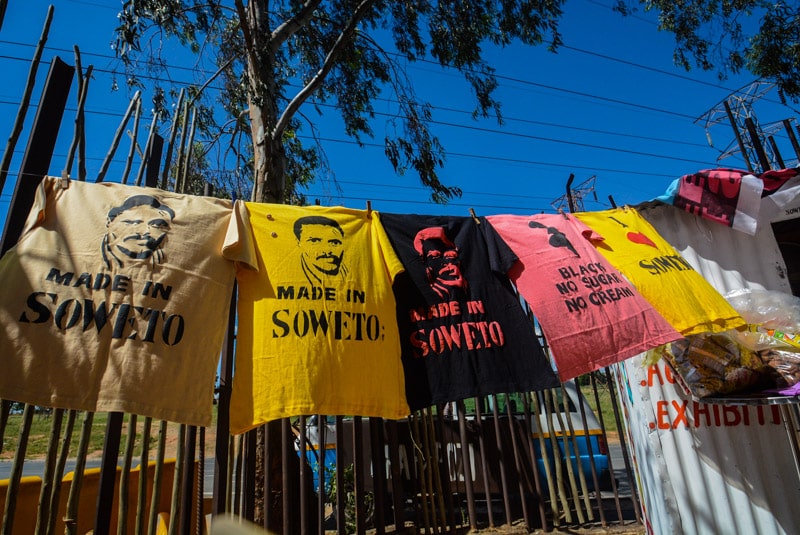 The name is an acronym for South Western Township, this township is a must-visit for anyone who wants to discover the pulsing heart of the country and the fight against apartheid of South Africa.
The name is an acronym for South Western Township, this township is a must-visit for anyone who wants to discover the pulsing heart of the country and the fight against apartheid of South Africa.
It represents the largest and most populous township in the Country, stretching for about 20km, south-west of Johannesburg, and the population could be close to 4 million inhabitants.
Soweto was set up in 1904 mainly to house the workers of the mines just outside the city center, successively, this segregation officially took place with the advent of apartheid and the city of Johannesburg was created as a place for the whites.
In 1950 more and more blacks were relocated from the center of Johannesburg to the township that, in 1963, took the name of Soweto. This township has experienced an incredible, just as little, planned growth, more and more foreigners or people from other parts of South Africa came in search of work to the then thriving gold mines.
Along with this boom there has been a growth of poverty, high rate of unemployment, lack of infrastructure, electricity and sanitation services.
Today, Soweto is a huge conglomerate in which social classes are, in turn, distinguished in: high class, average and poor, and often these would look at one another, in a melting pot context of South African cultures that have gradually developed into as many sub-cultures.
A tour to Soweto, I think, is important for starting your trip in South Africa, to discover the natural beauty but also to understand what is today, the country of Nelson Mandela.
[wc_box color="inverse" text_align="left"] SOWETO TOUR
For the tour I leaned on MoAfrika, cost of the tour for a full day, starting at 9:30 am and return around 17.30 ZAR 990 (about €65 per person).The cost include, pick up from the hotel, entrance to the apartheid museum, guide and driver, extra guide in Soweto, lunch, lift up to the 50th floor, the said Top of Africa, of the Carlton for a panoramic view. It is possible to book the tour on Tripadvisor at cost price on the spot, Zar 990.
[/wc_box]
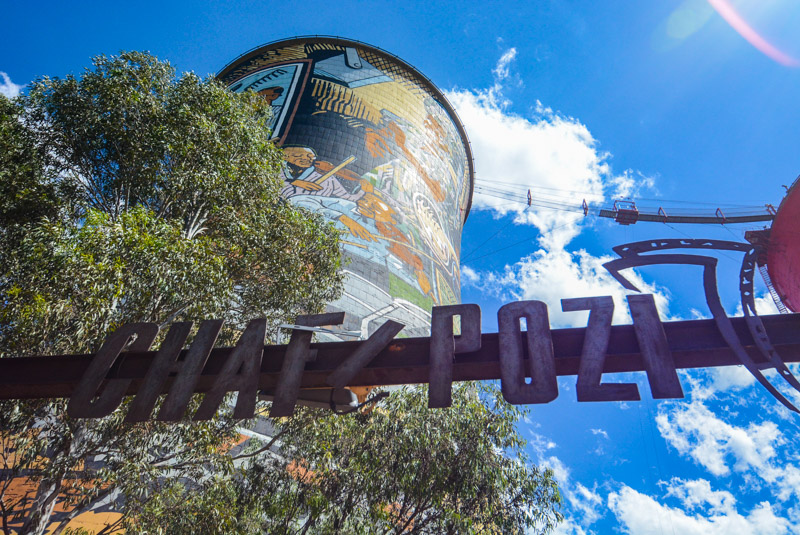
This museum is very beautiful, it was included in the guide visit made with the full day tour offered by MoAfrika, and it is worth the while to dedicate it one hour and a half up to two hours.
A path that helps us to follow the history of South Africa and Apartheid providing us with photos, videos, newspaper headlines.
A very beautiful structure for a very interesting permanent exhibition. The museum also has a section for temporary exhibitions included in the ticket. Admission: Adults 80 ZAR, students 65 ZAR
[wc_box color="inverse" text_align="left"]
Detailed study
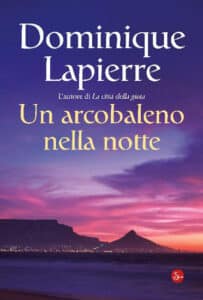 To know more about Apartheid, I recommend reading the book [easyazon_link identifier="0306818477" locale="US" nw="y" nf="y" tag="viaggiarelowc-21" cart="n" cloak="y" localize="y" popups="n"]A rainbow in the night[/easyazon_link], which tells of the advent and evolution of apartheid probing around the roots and showing how in this case the horror was not a thought out decision, least of all wanted, from the classes of the powerful, but was, instead, something born from below, from the poorest classes, in search of their own status that could redeem them by supporting extremist groups that has led to the separation and to the irrational hatred.
To know more about Apartheid, I recommend reading the book [easyazon_link identifier="0306818477" locale="US" nw="y" nf="y" tag="viaggiarelowc-21" cart="n" cloak="y" localize="y" popups="n"]A rainbow in the night[/easyazon_link], which tells of the advent and evolution of apartheid probing around the roots and showing how in this case the horror was not a thought out decision, least of all wanted, from the classes of the powerful, but was, instead, something born from below, from the poorest classes, in search of their own status that could redeem them by supporting extremist groups that has led to the separation and to the irrational hatred.
[/wc_box]

This market in Rosebank gives off its best on Sunday, that even the two upper floors are open, an African crafts market where even the way of buying represents well the life of the streets of Africa, you have to bargain.
Products from all over the Continent, this place is quite touristy but a nice location where to spend a few hours, eat, and buy some souvenirs to take home.
Open Monday to Thursday from 9:00 to 18:00, on Friday until 19:00. Sundays and public holidays from 9:00 to 17:00.
Official site: www.artandcraftmarket.co.za
The kind of islands completely extrapolated from the context of Johannesburg where shopping center, restaurants, bars, and luxury apartments are worlds apart.
A small open-air luxury neighbourhood between Rosebank and Sandton, but comfortable and quiet to be able to walk around without too many fears.
A recreated microcosm where there are numerous restaurants, including an excellent African restaurant, with many African national cuisines, the MOYO.
To enjoy the summer and warm evenings outdoors.
Johannesburg at first glance seems little exciting and little creative, a center made of buildings and residential quarters, of shopping centers and restaurants. Quiet areas in macro areas less secure. Yet even the great Joburg is gaining momentum in the creative and alternative panorama, art galleries, graffiti, bars and trendy restaurants.
[wc_row][wc_column size="two-third" position="first"]
Bordering the city center, this district, connected to Newtown from the Nelson Mandela Bridge, is fast becoming the artistic and cultural center of the city. The neighbourhood is full of students, hipsters, you go around by bike, and it is the favourite corner for the creatives of the city.
Colourful and alternative, it is the ideal neighbourhood for the trendy bars, contemporary art galleries, designer shops and eccentric fashion.
Numerous Braamfontein buildings have been converted into student housing or apartments in typical Manhattan loft style, the infrastructures have been modernised improving the urban ambience in which they are located.
For lovers of Jazz music right here is the Orbit Cafe which offers musical performances every night and excellent jazz calendars.
Closed on Monday.
[/wc_column][wc_column size="one-third" position="last"]
[su_photo_panel background="#fffff" shadow="0px 1px 2px #eeeeee" photo="https://www.viaggiare-low-cost.it/wp-content/uploads/2016/11/once-in-joburg.jpg"]Once in Joburg
Loved this hotels! For the location, right in Braamfontein, but also for the incredible modern rooms and huge bathroom. Couldn't recommend a better place to backpackers! [/su_photo_panel]
[/wc_column][/wc_row]
In addition to the creative vitality of the neighbourhood, another interesting aspect is the mix of historic monuments, such as the Lord Milner Hotel dating back to 1906 added to an African context where there is no shortage of beauty salons, news-stands, restaurants and internet cafes.
https://www.instagram.com/p/BMzYkE_h6wo/?taken-by=giuliaraciti
[wc_row][wc_column size="two-third" position="first"]
This district, just like Braamfontein, represents the cultural and generational change of the city as the urban upgrading of a once abandoned neighbourhood.
On Sundays and the first Thursday of the month, is held the main Market at the Arts on Main, where to delight the palate at the food stalls ranging from Ethiopian food to Durban curry, Indian dishes.
On the second floor, instead, are sold typically African handmade items but in urban style, an adaptation of the classic with the contemporary periods.
On Sunday, the streets Fox Street and Kruger Street, are generally full of people having a walk and eating outdoors.
[/wc_column][wc_column size="one-third" position="last"]
[su_photo_panel background="#fffff" shadow="0px 1px 2px #eeeeee" photo="https://www.viaggiare-low-cost.it/wp-content/uploads/2016/11/3334416.jpg"]Where to stay
Curiocity Backpackers, funky hostel in the heart of Maboneng, in urban and creative style. A great base for exploring the center of Joburg! [/su_photo_panel]
[/wc_column][/wc_row]
An interesting project in a very beautiful location The living room cafe, an urban cafe on the fifth floor immersed in green overlooking the metropolis.
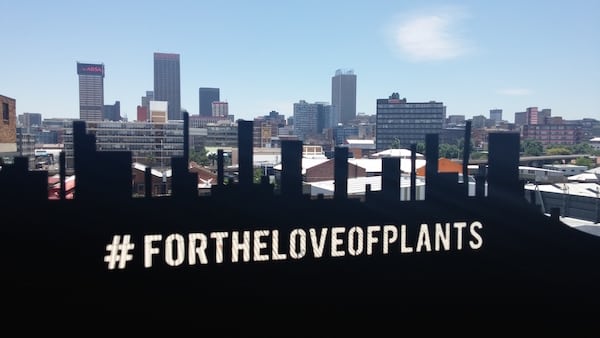
I do not normally recommend places to go to eat unless I am not advised for the typical food by the locals, whom I trust. This a selection regarding typical food.
To eat South African, meat is always present, recommended The Grillhouse in Rosebank or Meat & Co in Melrose Arch. To experiment instead with different African dishes, I recommend the Moyo always in Melrose Arch.
Another address to go to, especially in the daytime, is the 4th Avenue in Parkhurst, while the 7th Street, in Melville, is indicated for the night, for example, the Ant Cafe.
Obviously, on Sunday, it is worth making a trip to Maboneng, at the Market on Main, to delight on delicious dishes from all around the world, open from 10 to 15:00.
On Saturdays, the market is held in Braamfontein at Neighbourgoods Market, open from 9:00 to 15:00.
Always at Maboneng, in 280 Fox Street, for those who want to try Ethiopian food, the cafè Little Addis offers injera and typical Ethiopian coffee.
It is difficult to orientate on the right neighbourhood when little is known of a city. After doing various researches and asking local friends, it was highly recommended to me to stay out of the center, but at this point it is necessary to have a car, and stay in residential neighborhoods where in the evening you can go out without too much fear (true or not, I followed their advice).
The interesting areas are: Melrose Arch, rather expensive, Rosebank, Kensington, Melville and Sandton.
A very nice hotel in Melville, close to 4th Av, is the Mi Pi Chi, double rooms at $60, in the neighbourhood of Sandton instead a good compromise bang for your buck is the Soluna Guesthouse, $50 double rooms, with pool and free wifi.
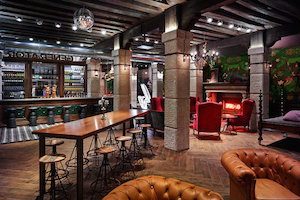 I remember that staying in these neighbourhoods requires to have a car or it is quite convenient and common throughout South Africa to move with UBER.
I remember that staying in these neighbourhoods requires to have a car or it is quite convenient and common throughout South Africa to move with UBER.
I also stayed in the center, in Braamfontein, because t was just 900m from the station where I took the train to Cape Town. The hostel is the Once in Joburg, the private room for two cost €45 while the dormitory beds cost €15 per person. The hostel is beautiful, central and in the heart of the creative districts of the city.
Excellent solution for those without their own means of transport but who do not want to ravel with the not quite intuitive means of transportation in residential areas of the city.
As for the whole of South Africa, the means of transport to be preferred is the car, you have to drive on the left but it will not take much to drive without getting confused.
For about two years now I rent cars on Rentalcars that offers great prices with full insurance, remember that in this case in the event that we have to turn to insurance and have to pay, Rentalcars will reimburse us. I happened to make use of this reimbursement and, although a bit slow, at the end I was refunded and saved about 50% of what I would have done directly with the rental company.
Alternatively, the options are: shared taxis, minibuses, or the Rea Vaya, buses that have been introduced on the occasion of the 2010 World Cup as a way to make front to the lack of security, linking Soweto (and other municipalities) to the center of Johannesburg.
The network has rapidly expanded since then and includes in the city center, Newtown, Braamfontein and Auckland Park.
The buses are quite comfortable and times are respected. A circular route within the cities costs R5.50, while a journey full of rich itineraries to the city center costs R12.50 (about 70 cents).
Finally, the Gautrain connects the city center with Pretoria making many stops such as Sandton, Rosebank, the airport, for the map of the routes click here. Tickets are paid with the Gold Car, cost 15Rand, buses leave every 12/20 minutes for the more popular routes and 20/40 for the long distances. Buses operate from 6:00 to 19:30 on weekdays. For the prices of the routes click here.
If you have only two days available, to optimise the time and the resources I recommend taking part in the tour of Soweto and the Apartheid Museum. I did this tour with MoAfrika. My guide, Mtu, was very kind and informative, he is from Soweto, and recommended this tour long and a bit tiring but that concentrates Johannesburg in about 8/9 hour.
The next day to learn more about the city my advice is to take a ticket for the Hop on ed Hop off bus, starting from €13 per person, that follows the following route:
At this point you will begin your trip in South Africa on the road that will take you to Cape Town!
I guess that's the first question everyone makes at the very thought of spending a few days in this African megalopolis.
Johannesburg is dangerous as is Cape Town, or of stories and warnings to take precautions are heard of a lot, the city is definitely not one of those that I can define a walk, unlike its rival because in fact here one goes round mainly in a car and, usually, the center is considered the most dangerous place.
During the day, in principle, you can drive around safely, I personally have walked with reflex on me to take pictures, being always alert on the neighbourhood where I was and asking if there was something to do or not and I have not had any problems.
Johannesburg is a city that is lived mainly in the daytime. Easy to see how the bars close rather early, that dinner is around 19.30 and rarely at midnight, you would still be making merry sitting at the restaurant.
The weekend market close in the early afternoon, the shops and art galleries as well. In any case, it is not recommended to go out walking at night, also because the city is empty, but it is advisable to have your own car or to take taxis (or Uber that works very well and is widely used).
Do not be frightened by these words, however, it is only good that you are careful, here you walk with your eyes always open, at night you should never really stop at traffic lights and must select the neighbourhoods where to go and where not to go.
But it would be a shame if you miss a few days in this exciting city in constant growth and change. It offers a look into the South Africa of yesterday, today and tomorrow!
Disclaimer: In questo post, alcuni dei link forniti sono link di affiliazione, il che significa che posso guadagnare una commissione se si effettua un acquisto attraverso questi collegamenti. Tuttavia, ciò non comporta nessun costo aggiuntivo per te. Le commissioni che ricevo attraverso questi link di affiliazione aiutano a finanziare e supportare il mio blog, mantenendo così la sua indipendenza e la mancanza di sponsorizzazioni. Mi sforzo sempre di fornirti le migliori informazioni e consigli possibili, basati sulla mia esperienza e ricerca personale. Mi preme sottolineare che il tuo sostegno è fondamentale per mantenere vivo questo blog e continuare a fornirti contenuti di qualità. Grazie per il tuo supporto!
Se vuoi organizzare un viaggio su misura in Sudafrica organizzato da operatori locali contattami.
Anni di esperienza, prezzi competitivi, sicurezza in viaggio e turismo responsabile è quanto promettiamo!
Alcune immagini pubblicate sono state tratte da Internet, nel caso in cui, il loro utilizzo, violasse diritti d’autore, mandateci una mail a [email protected] e verranno immediatamente rimosse.
really out class travel blog